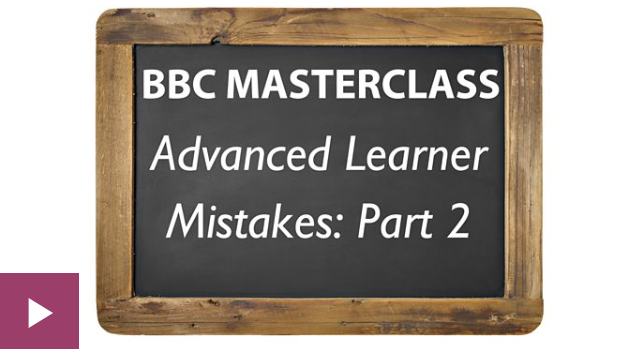Dan is back with more common mistakes that advanced learners can make. This time he’s looking at why go and come and take and bring are often confused – and he’s brought some friends along to help you understand the difference!
Dan
Hi guys! Dan for BBC Learning English here. In this session, we’ll be taking a look at advanced learner mistakes part two. Go and come, take and bring. Are you ready? Cue music.
“Please come here and bring that umbrella. No I can’t, I have to go home. I mustn’t forget to take my keys.”
Now, these verb pairs seem simple, but in fact many advanced learners still confuse them. In English, the choice depends upon the position of the speaker or listener when the speaker is talking. Come and bring are approaching verbs. They represent movement towards the place where the speaker or listener is when the speaker is talking. For example: “Please come to my house this evening and bring a bottle of Cola. Please come to my house this evening and bring a bottle of Cola.”
The speaker is at the house and the listener is approaching and bringing the Cola. But, different example: “Are you still sick? Can I come and see you? I can bring some aspirin.” The speaker is moving TO the listener’s position and bringing the aspirin with them.
Go and take are departing verbs. They represent movements away from where the speaker or listener is when the speaker is talking. For example: “John, I always go back to Brazil once a year. I like to take my family gifts.” The speaker and the listener are NOT in Brazil. The movement is away from their position and so is the object.
Another example: “John, can you go to the shop for me and buy some bread? Take this money to pay.” The speaker and listener are NOT in the shop. The movement is away from their position.
Remember that these verbs can also apply for movements that take place in the past or the future. So, for example: “When I was in hospital, why didn’t you come and visit me?” or, “I think tomorrow night I’ll go to the cinema.”
And these verbs can be combined. Check this out: “I think tomorrow night I’ll go to the cinema. I’ve got to take my loyalty card for a discount. Would you like to come? You can bring a friend.”
Have you got it? She got it! Now for more information check out www.bbc-story.com. I’ve been Dan, you’ve been awesome. See you next time – let’s go to the cinema.
Summary
Non-native speakers often have difficulty distinguishing between the verbs go and come and the verbs take and bring. This is because the verbs have the same basic meaning, but they are used to represent different directions.
Come and bring
Come and bring represent movement TOWARDS the place where the speaker or listener is.
We can use come and bring to show movement towards the speaker:
- Please come to my house this evening and bring a bottle of Cola.
Or, movement towards the listener:
- Are you still sick? Can I come and see you? I can bring some aspirin.
Go and take
Go and take represent movements AWAY from where the speaker or listener is.
- John, I always go back to Brazil once a year. I like to take my family gifts. (The speaker and listener are not in Brazil.)
- John, can you go to the shop for me and buy some bread? Take this money to pay. (The speaker and listener are not in the shop.)
These verbs can be combined:
- I think tomorrow night I’ll go to the cinema. I’ve got to take my loyalty card for a discount. Would you like to come? You can bring a friend.
Session Grammar
Confusing verbs
Go and come and take and bring are often confused.
Come and bring show movement TOWARDS the place where the speaker or listener is.
Please come to my house and bring a bottle of Cola.
Are you still sick? Can I come and see you? I can bring some aspirin.
Go and take show movement AWAY from where the speaker or listener is.
John, I always go back to Brazil once a year. I like to take my family gifts.
John, can you go to the shop for me and buy some bread? Take this money to pay.
